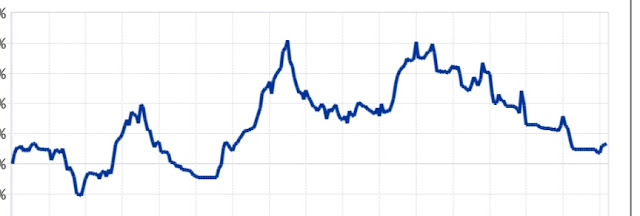The "Fishhook" is a setup I have used successfully for years to get entries in powerful stocks. This post will cover what a " fishhook "is and how I to trade it.
The objective and Background.
Before beginning, I must make a confession--I used to trade junk stocks.
Still, some of those stocks would make amazing moves. Remember the Ebola hazmat suit stocks, shipping stocks, and the dozens of biotech stocks? Sure some ran for hundreds of percents but most were one-day wonders. How could I determine what stocks had superstar potential and which stocks were done?
I then started studying big winners and noticed something interesting-- the stocks that could make a big move one day, then fall below (profit taking/ shorts) that first day close and then recover that level must have abnormal strength. I called the setup the fishhook because it looked like a fishhook curving around.
Although I enjoyed a fair amount of success trading junk stocks, I don't like them. The gap risk is substantial. I have been in many stocks that were working and have had big gains that get erased in seconds after a dilution filing.
I made a major breakthrough in my trading when I cut out illiquid stocks from my universe. I then realized that the fishhook was a great way to get into major moves (usually following earnings) and it is my favorite way to get into an earnings move.
Trading the Fishhook
Earnings trading is tricky--take a position before them and you take a major binary risk. Buy the earning's gap and you risk getting faded all day. The fishhook reduces these risks-- it is setup to take advantage of a continuation of an earning's related move. The initial reaction (profit taking) gets supported by institutions who continue buying and this continued demand is what I look to take advantage of.
Step 1. Identify Massive Interest --
The first thing I look for is stocks that are showing massive interest. In other words, the volume is high and the percentage move on the day is large. Earnings usually will cause this interest; however, other news related events such as FDA announcements can do the same. Gaps are good indicators of demand/ supply imbalances.
Step 2. -- let supply dry up and buy on the reclaim
After the initial day move (the one that everyone on twitter) starts talking about, there is almost always some type of counter move. Profit taking, at that point, I want to see a trading range start to narrow and the 5ema hold. The stock should trade below the Day 1 High Volume close at some point during the next 2 to 4 days. A stock that trades below and then recovers the Day 1 close, triggers the fishhook.
Examples: SNAP has been a big winner for me this year from the fishhook entry:
AAOI: This turned out to be one of my best trades of that year:
CYBR: Nice trend from the entry:
STEP 3: Manage Risk / setting stops
As with any setup, the fishhook can fail. Danger signs would be where the stock cannot hold the day 1 close after recapturing the close at a minimum the 5 ema should hold, thats the area where I look to place my stop until a run occurs. At that point, it's just a matter of letting the trade work. Some will, some won't.








